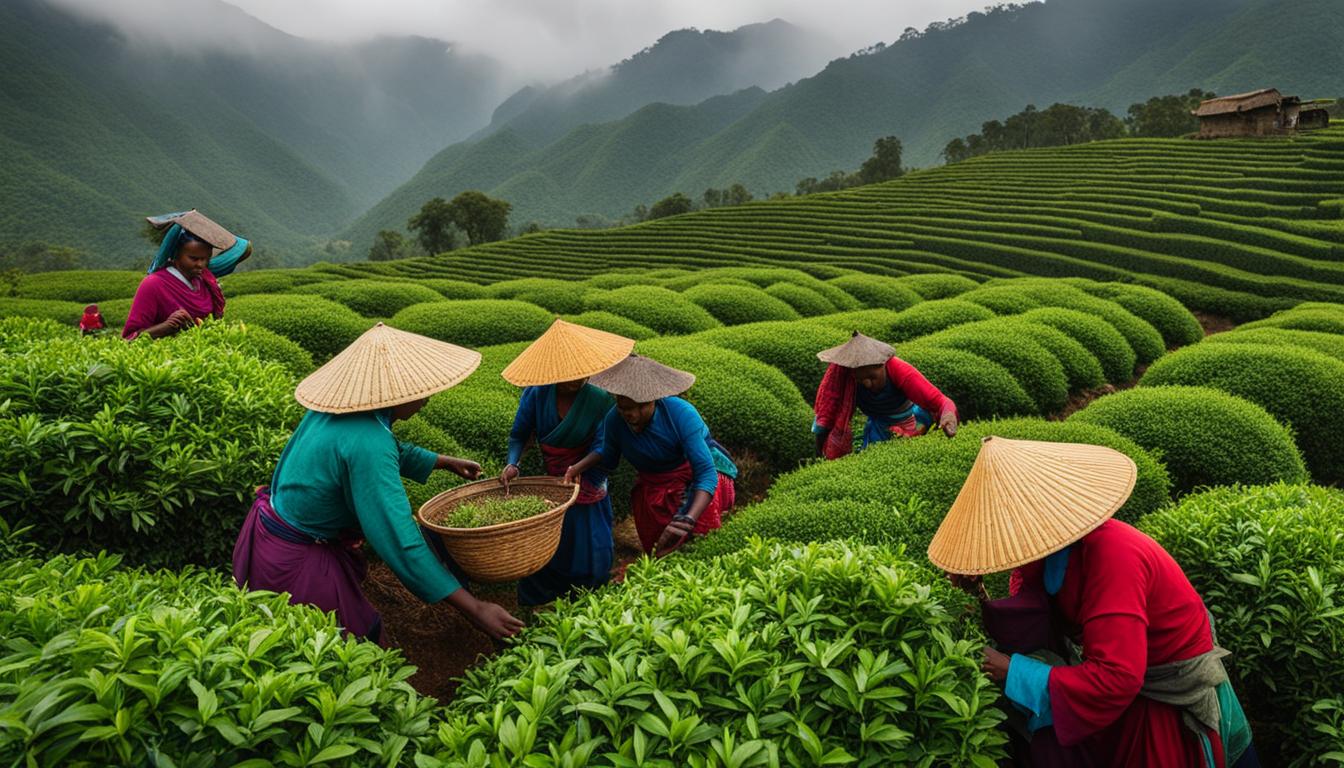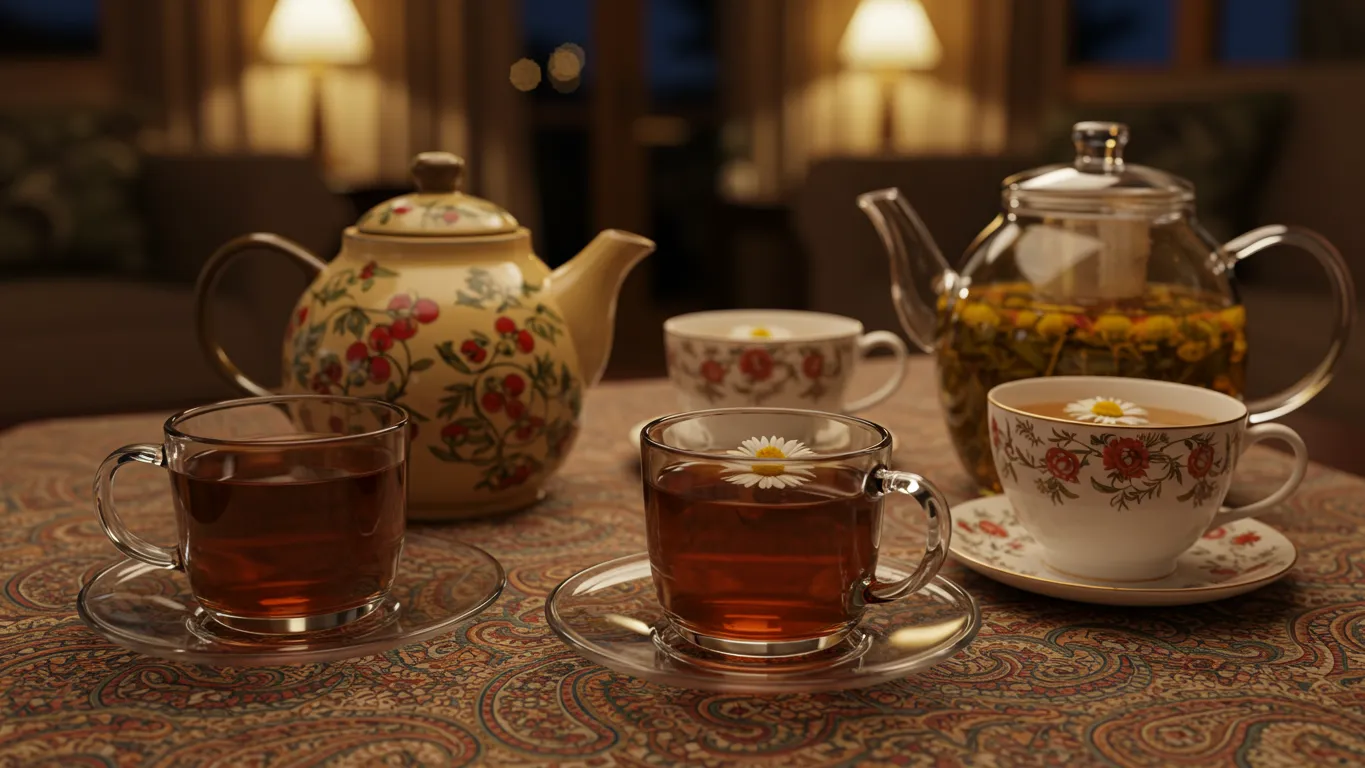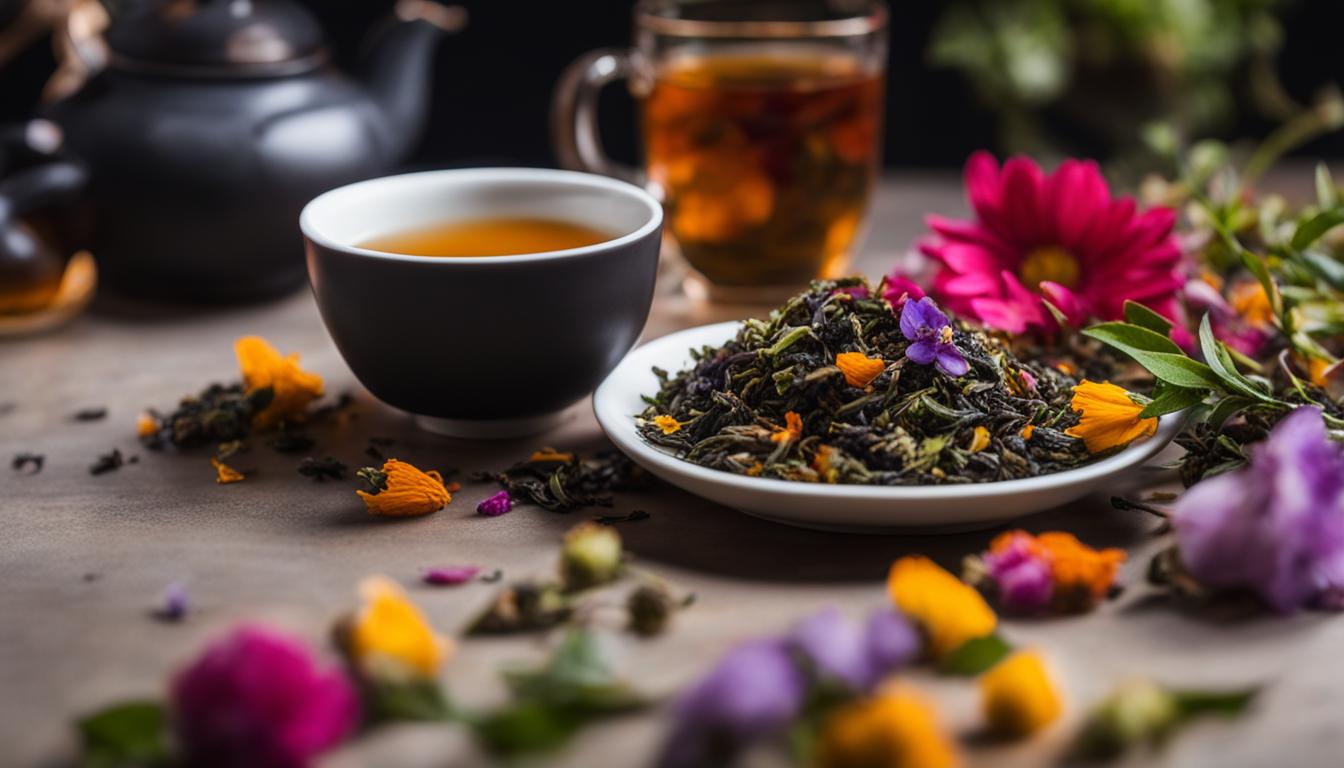Welcome to our exploration of the fascinating world of artisanal tea production. In this article, we will take you on a journey through the meticulous process of transforming tea leaves into a cup of exquisite beverage. From cultivation to firing and packaging, each step is infused with artistry and care, resulting in the creation of teas that are highly esteemed and cherished by tea connoisseurs worldwide.
Key Takeaways:
- Artisanal tea production involves a meticulous process that contributes to the distinctive character of the final product.
- Skilled pickers handpick tea leaves during the harvesting process, ensuring the highest quality selections.
- The journey of artisanal tea encompasses cultivation, withering, rolling, oxidation, firing, and packaging.
- Precise brewing techniques are essential to fully experience the flavors and aromas of artisanal tea.
- Supporting artisanal tea promotes cultural heritage and sustainable practices in the tea industry.
Cultivation: Nurturing Tea Plants with Artisanal Care
Tea cultivation is the delicate art of nurturing tea plants with artisanal care. It goes beyond conventional agriculture, demanding a deep understanding of the land and its rhythms. In renowned regions like Darjeeling and Fujian, tea plants are carefully grown, taking advantage of the unique terroir that imparts distinct flavors to the leaves.
Choosing the appropriate tea varietal is crucial, as different varieties have their own characteristics and flavor profiles. The timing of the harvest is also essential, as it determines the maturity of the leaves and the resulting taste. Skilled tea pickers handpick the leaves, ensuring that only the highest quality selections make it to the next stage of production.
Nurturing tea plants in sync with nature’s pulse is at the heart of artisanal cultivation. It requires an intimate connection with the land and a commitment to preserving its biodiversity. By embracing sustainable practices and avoiding harmful chemicals, artisans ensure the health and vitality of the tea plants, ultimately enhancing the flavor and quality of the final product.
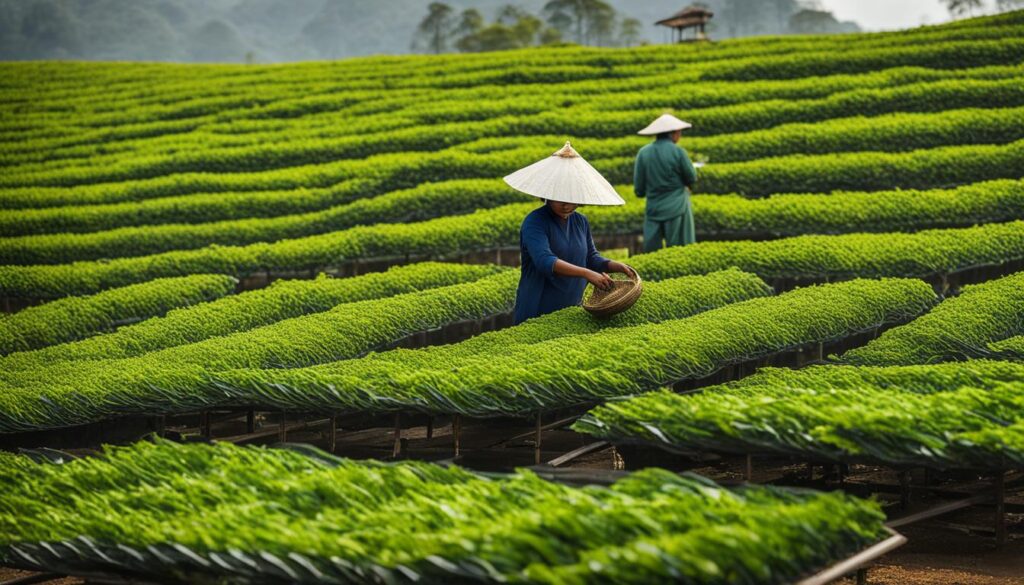
Behind the scenes of tea production, the cultivation stage acts as the foundation for the entire process. The meticulous care invested in nurturing tea plants sets the stage for the subsequent steps of tea making, showcasing the artistry and craftsmanship involved in every cup of artisanal tea.
The Art of Tea Making: From Harvesting to Oxidation
Harvesting and processing tea is a delicate art that involves precise techniques to bring out the exquisite flavors and aromas in every cup. From the careful selection of tea leaves to the meticulous modulation of oxidation, each step in the tea-making process contributes to the creation of a truly artisanal beverage.
Skilled pickers play a crucial role in the tea-making process, handpicking the finest leaves that are then used to craft the tea. This meticulous selection ensures that only the highest quality leaves make their way into the final product. The artistry of tea making also lies in traditional processing methods, such as withering, rolling, and oxidation.
Withering is a crucial step in the tea-making process that allows the leaves to lose moisture and become pliable. This process not only prepares the leaves for rolling but also helps develop the tea’s unique flavors. Rolling, on the other hand, shapes the tea leaves and releases essential oils and enzymes, further enhancing the aroma and taste. Finally, the oxidation process brings out the tea’s characteristic color and complexity, giving it its distinct personality.
| Tea-making Process | Description |
|---|---|
| Harvesting | Skilled pickers carefully handpick the finest tea leaves. |
| Withering | The leaves lose moisture and become pliable. |
| Rolling | The tea leaves are shaped, releasing essential oils and enzymes. |
| Oxidation | The tea develops its characteristic color and flavor profiles. |
The art of tea making is a testament to the craftsmanship and dedication of the artisans who bring this beloved beverage to life. With every sip, you can taste the meticulous care and attention to detail that goes into the production of artisanal tea. Whether it’s a fragrant green tea or a bold black tea, each cup is a testament to the rich traditions and timeless beauty of tea making.
The Craft of Tea Manufacturing: Preserving the Essence of Artisanal Tea
After the meticulous process of crafting artisanal tea, the final stages involve firing or drying the leaves and carefully packaging them to preserve their quality. This delicate balance of firing and packaging is a testament to the craft and expertise of tea manufacturing.
Firing or drying the leaves is a crucial step that halts the oxidation process, ensuring that the developed flavors are preserved. It is a delicate art that requires an understanding of how heat interacts with the tea leaves. The temperature and duration of firing or drying must be carefully calibrated to prevent over-processing while preserving the tea’s delicate flavors and aromas.
In addition to firing, the packaging of artisanal tea plays a vital role in maintaining its quality. Traditional methods make use of materials that allow the tea to breathe, such as paper or cloth bags. This allows the tea to retain its freshness and unique characteristics over time. The careful packaging ensures that every cup of artisanal tea delivers a remarkable sensory experience.
Firing and Packaging: A Delicate Balance
When it comes to firing the tea leaves, timing is everything. Too much heat can result in a loss of delicate flavors, while too little heat may not achieve the desired effect of halting oxidation. Tea artisans carefully monitor the firing process, adjusting the temperature and duration to achieve the perfect balance.
“The firing process is like a dance. We have to move with the tea, understanding its needs and responding accordingly. It requires experience, intuition, and a deep connection with the craft.” – Tea Master
Meanwhile, packaging is not merely a matter of aesthetics but an essential aspect of preserving the tea’s essence. Artisanal tea is often packaged in materials that allow for the natural exchange of air, maintaining the tea’s quality over time. This ensures that each cup of tea brewed from an artisanal package is a testament to the craft and dedication that went into its creation.
Table: Comparing Firing Methods
| Firing Method | Temperature Range | Duration | Result |
|---|---|---|---|
| Pan Firing | 150-200°C | 2-5 minutes | Preserves delicate flavors, creates smoky notes |
| Oven Drying | 80-100°C | 15-30 minutes | Preserves freshness, subtle flavor profile |
| Sun Drying | Dependent on weather | 1-3 days | Natural, nuanced flavors |
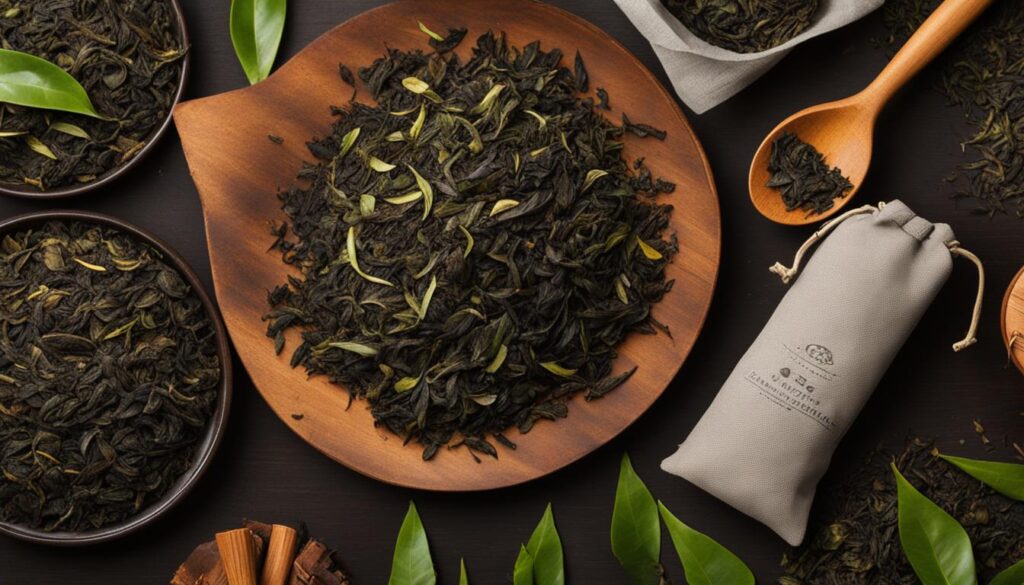
The firing and packaging stages of artisanal tea production are integral to preserving the tea’s essence and ensuring a memorable drinking experience. By understanding the nuances and techniques involved in these processes, we can appreciate the craftsmanship and dedication that goes into every cup of artisanal tea.
Conclusion
In conclusion, the journey of artisanal tea from leaf to cup is a fascinating process that combines tradition, skill, and a deep connection with nature. Each step in the tea-making process contributes to the unique character and flavor profiles that make artisanal tea so special.
From the careful cultivation of tea plants in renowned regions with distinct terroir, to the meticulous picking of leaves by skilled artisans, we witness the artistry and craftsmanship that goes into producing the finest teas.
The tea-making process, with its stages of withering, rolling, oxidation, firing, and packaging, exemplifies the dedication and expertise required to create a superior cup of tea. Each batch of tea is carefully crafted, with the modulation of oxidation playing a crucial role in developing the tea’s exceptional flavors and aromas.
By appreciating and supporting artisanal tea, we not only indulge in a truly remarkable beverage, but also contribute to the preservation of cultural heritage and the promotion of sustainable practices. So, the next time you enjoy a cup of artisanal tea, remember the journey it took from leaf to cup, and savor every sip of this remarkable elixir.
FAQ
What is artisanal tea production?
Artisanal tea production is a meticulous process that involves various stages, each contributing to the distinctive character and highly esteemed status of the final product. It begins with cultivation and involves careful plant selection, handpicking of leaves, withering, rolling, oxidation, firing or drying, and packaging.
How are tea plants cultivated?
Cultivation of tea plants goes beyond conventional agriculture. It requires a deep understanding of the land and its rhythms. Tea plants are carefully grown in renowned regions with unique terroir, such as Darjeeling and Fujian. The selection of appropriate varietals, timing of harvest, and nurturing of plants in sync with nature’s pulse lay the foundation for the quality and flavor profile of the tea.
What is the art of tea making?
The art of tea making begins with skilled pickers handpicking the leaves, carefully selecting the appropriate ones for the desired flavor profile. The leaves then undergo processes like withering, rolling, and oxidation. Withering allows the leaves to lose moisture, rolling shapes the tea and releases essential oils, while oxidation develops the tea’s characteristic color and flavor profiles.
How are artisanal tea leaves preserved?
After the meticulous crafting process, the leaves undergo firing or drying to halt oxidation and preserve the developed flavors. Firing or drying requires the artisan’s expertise in understanding how heat interacts with the tea leaves. The temperature and duration are carefully calibrated to prevent over-processing and preserve the delicate flavors and aromas. Additionally, traditional packaging methods using materials like paper or cloth bags play a crucial role in preserving the tea’s quality.
Why should I appreciate and support artisanal tea?
By appreciating and supporting artisanal tea, consumers not only savor a superior cup but also participate in the preservation of cultural heritage and the promotion of sustainable practices. Each step in the process, from cultivation to packaging, showcases the artistry and craftsmanship behind artisanal tea production, resulting in distinct character and flavor profiles of each batch of tea.

